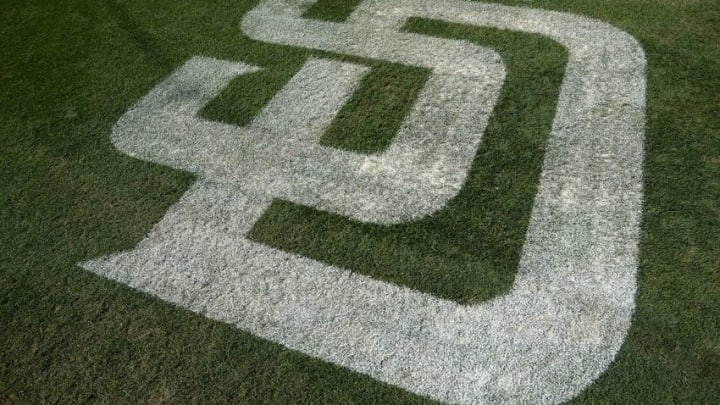After arriving in the Drew Pomeranz deal, Anderson Espinoza is the new top @Padres prospect: https://t.co/lGLEtDWKuj pic.twitter.com/fRPXp9W3Nx
— MLB Pipeline (@MLBPipeline) July 15, 2016
Scouting Report
To get a look at Espinoza, I viewed three of his starts in full. Those three starts had a total of 14 2/3 innings, 13 strikeouts, a 3.68 ERA, and a 1.02 WHIP.
Size/Stature/Delivery
Espinoza has drawn a number of comparisons to Pedro Martinez due to his stature, as he stands 6′ and is listed at 170 pounds, and I’d wager if he’s gained much on top of that 170, it’s not a ton. He is still growing, though, with some saying he’s added an inch or two of height since his signing, but this has not been reflected in his listings.
Espinoza has an easy, loose delivery. He takes a small step back and toward first base, then resets his right foot in front of the pitching rubber before lifting his left leg to just below his waist. At that peak of that lift, he gains the first speed of his delivery, having moved very slow and deliberate before that.
He than pushes forward hard on his right leg and gets very good extension with a straight left leg. He comes from a high 3/4 arm slot, higher when throwing his curve than when throwing his fastball or change. He finishes with a high leg kick from his right leg, ending up in good fielding position.
Because of the altering of speeds within his delivery and the straightened landing leg as he pushes forward, Espinoza was susceptible to issues with landing location inconsistency. Due to the amount of force and movement that Espinoza generates from his legs, when he gets his legs out of alignment, his pitches don’t have the same break nor velocity. This is more noticeable in his work from the stretch, and while he stays fairly consistent with his arm slot when his landing spot is off, he does tend to struggle with releasing early, which pushes the pitches high and arm side.
Pitches
Espinoza mixes three pitches that give four looks. The first is a fastball that sits in the mid-90s and can touch as high as 98 (some have reported triple digits, but I’ve not heard confirmation of that from the folks I chat with in the scouting community). His fastball has very good natural sink to the arm side. When he struggles with his arm spot, he finishes with the fastball up and arm side, typically, sending right-handed hitters bailing out of the box.
He compliments that fastball with a change up that sat around 82 in the games I watched, giving him a very solid 15 MPH differential from the fastball. He has tremendous arm speed match with the fastball, and it is difficult to pick up the pitch, unless he’s struggling with the landing spot, when the pitch actually finishes more up and over the plate than up and arm side like the fastball. The change exhibits the same arm side sink that the fastball does, and with its speed difference, it’s typically Espinoza’s best swing-and-miss pitch.
His third pitch has multiple looks. He throws his curve ball with a 12-6 break. He throws the pitch in the lower 70s with a sharp break and good depth. He also can throw the same pitch in the 78-82 range with a more shallow break, but still the same sharpness to the break. The first pitch tends to be a swing and miss pitch that hitters struggle to gauge the full depth on. The second curve tends to generate a lot of weak contact as hitters either swing under the ball, popping it up weakly, or swing on the ball well, and its natural hard sink drives it into the ground.
Video
Next: Future Outlook
